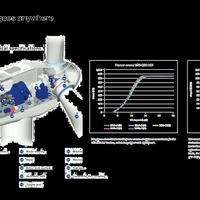
The Czech Republic, also known as Czechia, is a highly developed, export-driven economy located in Central Europe. It is a member of the European Union, which plays a central role in shaping its trade and economic policies. Czechia`s economy is diversified, with strong sectors in manufacturing, automotive, machinery, and technology. The automotive industry, in particular, is a cornerstone of its exports, with companies like Škoda Auto being globally recognized. Other major exports include machinery, electronics, steel, and glass products. On the import side, Czechia primarily brings in machinery, electronics, chemicals, and fuels, which are essential for its industrial and energy needs.
Czechia`s trade relationships are heavily concentrated within the European Union, particularly with Germany, which is its largest trading partner. However, the country has been expanding its trade ties with regions outside Europe, including the Middle East. In recent years, it has increased exports of industrial machinery, automobiles, and medical equipment to Gulf Cooperation Council (GCC) countries, while importing oil and petrochemical products from the region. The Middle East is seen as a growing market for Czech manufacturing and defense industries, and bilateral trade agreements have been established to strengthen this relationship. However, trade volumes with Middle Eastern countries remain relatively smaller compared to those with the EU.
The Czech banking and financial system is robust, modern, and well-integrated into the global financial system. It is regulated by the Czech National Bank (CNB), which oversees monetary policy, financial stability, and the currency (the Czech koruna, CZK). The country has a stable banking sector dominated by foreign-owned banks, particularly from Western Europe, ensuring access to advanced financial products and services. The economy operates on principles of a free market, with low unemployment rates and high levels of foreign direct investment (FDI). Czechia is also known for its fiscal discipline, maintaining low public debt levels relative to GDP. The government`s focus on innovation, research, and development has supported the economy`s transition toward higher value-added industries.
-
 Freight&Trade Service 3 months ago
Freight&Trade Service 3 months ago Czechia
Vestas V52-850 kW wind turbines
Czechia
Vestas V52-850 kW wind turbines
Manufacturer: VESTASOutput power kW: 600 kWYear of installation: 1996Details: 1Office: +420 22 888 28 74Messenger: +420 721 690 205 (WhatsApp, Telegra...Details
In 2025, Czechia"s trade dynamics reveal several notable trends when benchmarked against global averages. A surprising reversal is seen in the merchandise import volume indices, where Czechia reported a decline from 106. 5 in 2022 to 94. 4 in 2023, contrasting with the global average increase to 104. 47. This suggests potential import constraints or a shift in sourcing strategies. Moreover, Czechia’s merchandise export volume indices also decreased to 97. 6 in 2023 from 105.
2 in 2022, diverging from the global increase to 108. 41, indicating competitive pressures or market challenges impacting export volumes. Despite these volume declines, Czechia"s merchandise export unit value index increased to 108. 3, surpassing the global index of 95. 03 in 2023, highlighting the country"s ability to command higher prices for its exports, possibly due to enhanced product quality or strategic market positioning. The import unit value index, however, reflects a modest growth to 103. 5 in 2023, aligning with global trends but suggesting Czechia is importing higher-value goods. These indicators present a dual opportunity for businesses engaged in West Asian trade with Czechia, where potential exists for market entry strategies focusing on high-value goods.
Companies may consider leveraging platforms like Aritral. com to enhance visibility and access AI-driven market insights, crucial for navigating these evolving trade landscapes. Aritral simplifies international trade through its comprehensive service offerings, including product listing and global sales assistance, positioning businesses to capitalize on Czechia’s high-value export market. In the broader economic picture, Czechia’s GDP growth remains robust, driven by a resilient services sector, aligning with the global service value-added average of 52. 85% of GDP in 2023. However, Czechia"s performance in domestic credit to the private sector (% of GDP) and consumer price inflation remains areas to watch, with implications for investment strategies. Entrepreneurs seeking to engage with Czechia"s market can harness these insights to tailor their approaches, optimizing for both risks and opportunities in the global trading system. "

